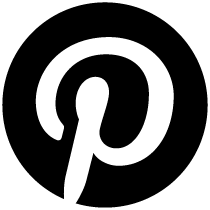The Best Shows to See in Dubai Right Now
From Maryam Hoseini’s carnal figures to Asunción Molinos Gordo’s research into agricultural histories, here’s what not to miss during Art Dubai
From Maryam Hoseini’s carnal figures to Asunción Molinos Gordo’s research into agricultural histories, here’s what not to miss during Art Dubai

Miles Greenberg | ICD Brookfield Place | 15 April – 18 May

Miles Greenberg continues his exploration of the body as sculptural material with the second iteration of his newly commissioned endurance work, Le Miroir (The Mirror, 2025). A homage to Andrei Tarkovsky’s eponymous 1975 film, this project skilfully deemphasizes movement. The first iteration – an elegiac, somewhat-funereal, six-hour performance – was filmed live in Marrakech earlier this year. Acte II splices this documentation with footage shot in the UAE desert for a multi-channel film and installation, which will be accompanied by a single, live, opening-night performance – the artist’s first in Dubai.
Maryam Hoseini | Green Art Gallery | 15 April – 24 May

The elegantly swirling, carnal paintings in Maryam Hoseini’s solo show ‘Swells’ have the recursiveness typical of a Solitaire endgame. Here, however, instead of cascading cards, you get a tessellation of checkerboard tiles and body parts: hairy human calves sit alongside spiky insect legs in Psychic Fold (2025) or furred thatches in Bruised Cosmos (2025); while countless disembodied, lactating breasts are dotted throughout. The fragmented, flattened architecture suggests an urbex setting except, instead of a post-industrial bunker, the flesh-toned palette indicates an intimate, interior landscape.
Hassan Sharif | Gallery Isabelle | 15 April – 31 May

Throughout his career, the late Hassan Sharif made work from found industrial objects and cheap, mass-produced goods in response to the post-oil explosion of consumer culture in the UAE. ‘The Storyteller’ revisits his ‘Objects’ series (1982–2016) via the lens of craft and gendered labour: the artist sometimes attributed his woven works to a female alter ego, Sharifa Hassan. Often dubbed the grandfather of contemporary art in the UAE, Sharif was a consummate storyteller. To this end, each work is accompanied by a text that unspools the backstory to its materiality and process, as well as the artist’s metanarrative: his framing of his entire oeuvre as a singular masterwork through an emphasis on accumulation, repetition and duration.
Shilpa Gupta | Ishara Art Foundation | 18 January – 31 May

Shilpa Gupta’s first solo show in West Asia, ‘Lines of Flight’, positions the site-specific sound installation Listening Air (2019–23) alongside multi-media works from the past two decades of her practice, such as A Liquid, the Mouth Froze (2018). At its heart lies a fascination with lines: from borders drawn by colonial administrators (A0–A5, 2014) to the markers deployed by governments to classify and restrict people’s movement based on race, nationality or gender (Untitled (There is No Border Here), 2005–06). There is a certain incendiary spirit threaded through the show: works such as Untitled (2015) – with its take-away envelopes filled with shredded documents detailing the abuse of state power at the Indo-Bangladeshi border – whisper to the possibility of deterritorialized emancipation.
Asunción Molinos Gordo | Jameel Arts Center | 16 April – 21 September

Food production becomes a synecdoche for global politics in Asunción Molinos Gordo’s research-driven practice. Her first retrospective in West Asia, ‘The Peasant, the Scholar and the Engineer’ spans 15 years of the artist’s engagement with agricultural history in Egypt and the Arab world, tackling environmental degradation and the inequitable distribution of water, food and other resources threatened by privatization and the extractive logic of agronomics. Grounded in the concept of pensamiento campesino (peasant knowledge) – the ancestral modes of land stewardship that accumulate in farming communities – the show brings together major installations. These include WAM (World Architecture Museum) (2010), which re-creates the colonial aesthetics of Cairo’s Agricultural Museum while dedicating its displays to the effects of biotechnology, with more recent investigations into the Arab and Muslim legacy in Molinos Gordo’s native Spain, such as the ceramic work ¡Cuánto río allá arriba! (How Many Rivers Above!, 2021).
Majd Arandas | Gulf Photo Plus | 13 April – 13 August

On 1 November 2023, Palestinian photographer Majd Arandas was killed by an Israeli airstrike near his home in central Gaza. Like many of his compatriots, Arandas had turned to documenting the brutality and decimation of the region. He is remembered, however, for his skilful capturing of small moments of joy. In ‘A Memorial in Fragments’, works from the artist’s considerable oeuvre are presented alongside contributions from friends, family and other photographers. Highlights include the series ‘Majd’s Gaza’ (2014–24), which features scenes of grainy tenderness, highlighting the exuberance of life: parakeets canoodle on an outstretched hand, a horse grazes in a meadow at sunset, a pair of legs is seen diving into the sea. The show invites us to consider the shifting roles and responsibilities of photography and the afterlife of images as witnesses.
Huda Lutfi | The Third Line | 15 April – 27 May

Known for her collages criticizing the capitalist patriarchy of Egyptian society through female archetypes, Huda Lutfi’s latest exhibition, ‘Unraveling’, reflects a quieter turn in her practice. In the series ‘When Dreams Call for Silence’ (2019), the female body is still present but inhabits domestic spaces with an elegiac timbre – as a corpse bride, as a severed head on a banquet chair, intimated in a discarded shoe. Nearby, a new video, The Seven-legged Demon of the Night (2025), pays tribute to the artist’s seamstress mother. Particularly compelling are the small collages from the series ‘Healing Devices’ (2020–ongoing), which she began during the pandemic. Drawing their geometric assemblages from The Knowledge of Ingenious Mechanical Devices (1206) by medieval polymath Ismail Al Jazari, they leave space for spiritual introspection.
Main image: Majd Arandas, ‘Majd’s Gaza’ series, 2014–24, green tray frame, mounted photograph, 55 × 36.5 cm. Presented by Gulf Photo Plus. Courtesy: the artist























